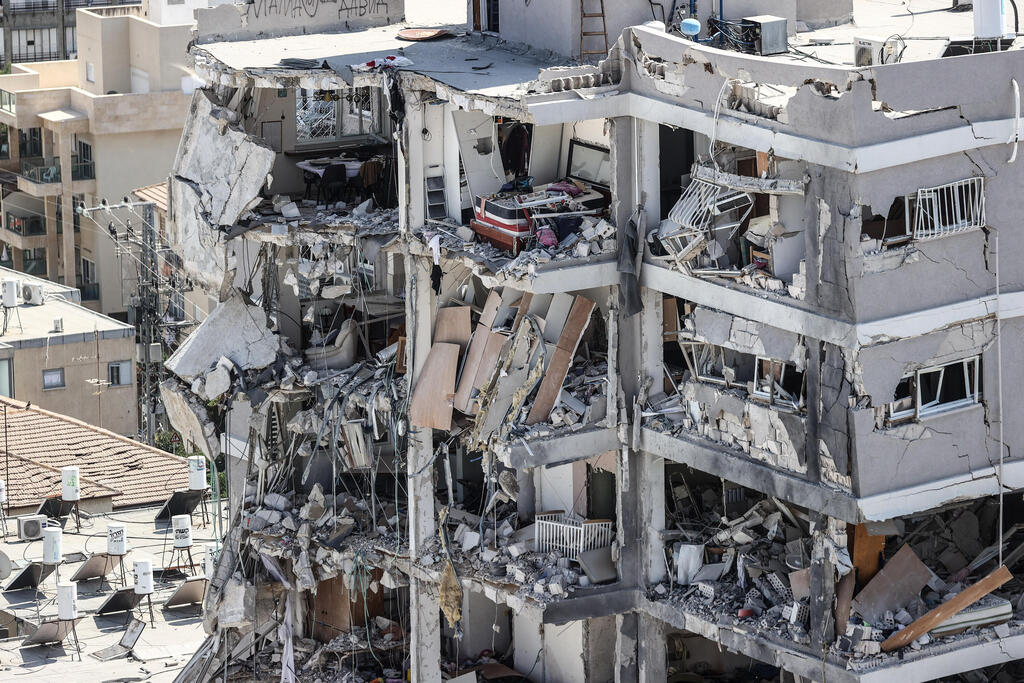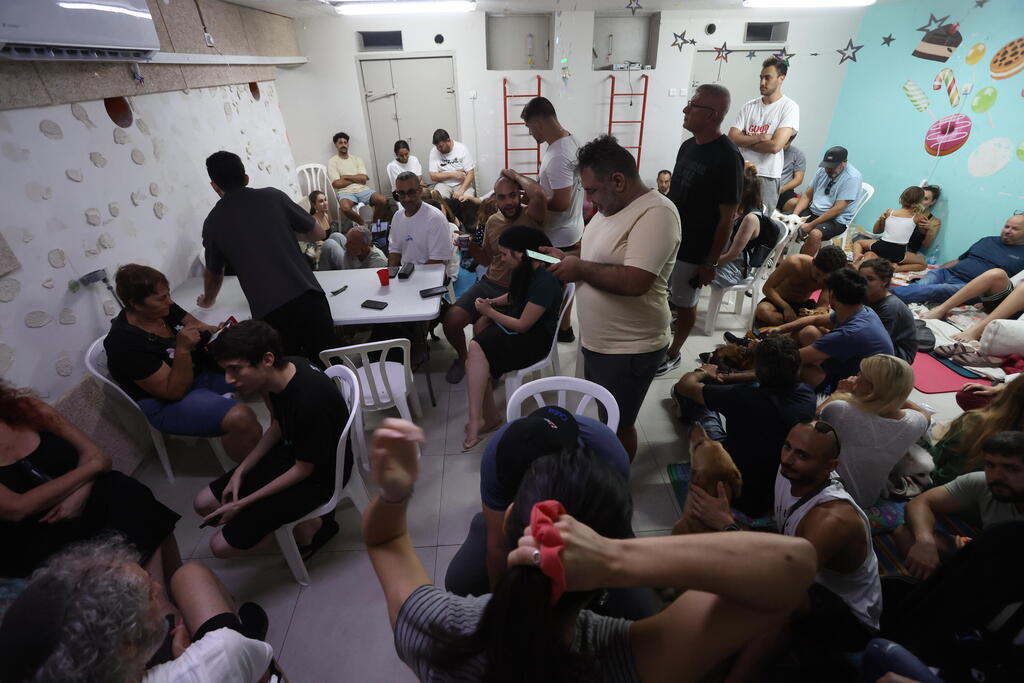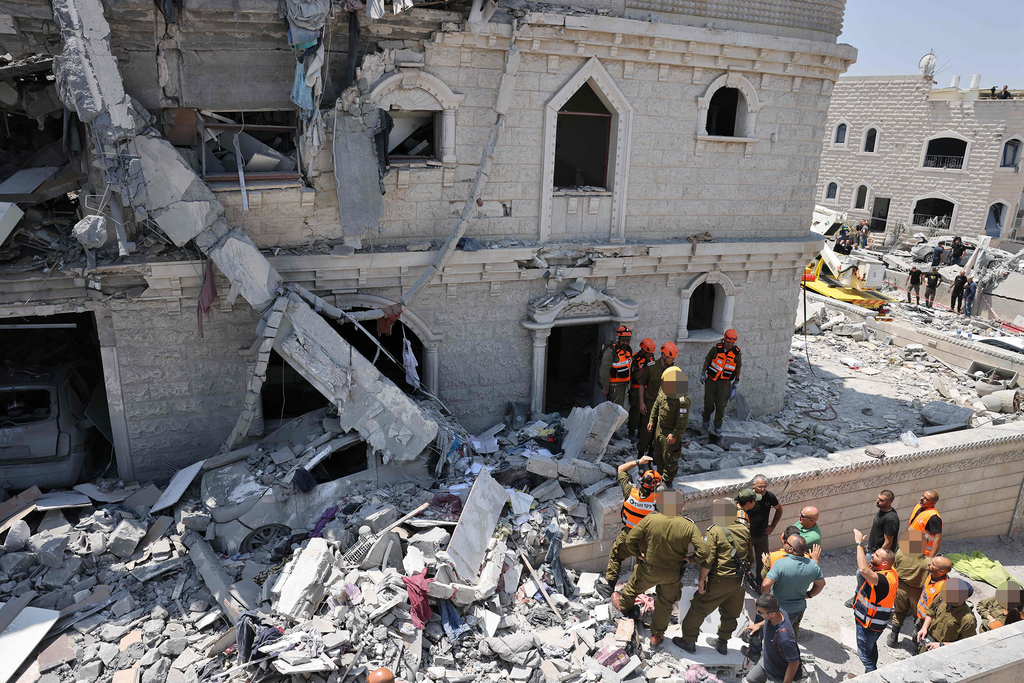Recent missile barrages from Iran have already taken the lives of civilians and left many injured, alongside scenes of destruction rarely witnessed in Israel. One of the main drivers of this devastation is what’s known as the blast wave effect — the violent pressure wave generated by a sudden release of energy during an explosion.
While the reach of these waves varies depending on numerous factors, the sheer force of the blast remains the most critical element. But what exactly is a blast wave? How does it form? What influences its strength and range? And how can its damage be reduced?
Iranian missile impact site in Bat Yam
(Video: Gil Nechushtan)
The destructive power of missiles stems largely from the shock waves their explosions create. These waves not only wreak havoc on buildings but also cause severe and sometimes fatal injuries to people caught in their path.
“A blast wave is essentially a shock wave triggered by a sudden, massive release of energy,” explains Prof. Asher Yahalom of Ariel University. “When this happens, the energy rapidly compresses the surrounding air or medium, forming a high-pressure wave that radiates outward from the source.”
According to Yahalom, “the key characteristic of a blast wave is the sharp, almost instantaneous spike in pressure, which greatly exceeds normal atmospheric pressure. The wave travels at extremely high speeds — roughly the speed of sound, about 1,125 feet per second. The initial peak pressure fades quickly as the wave spreads outward. This surge in pressure is the primary cause of destruction in explosions. The sheer force can collapse buildings, shatter windows, hurl objects and inflict devastating internal injuries — sometimes fatal.”
A blast wave’s severity depends on several variables. “The amount of energy released during the explosion is the most significant factor. The more energy, the stronger and farther-reaching the blast, and the greater the damage,” Yahalom says. “The type of explosive also matters because different materials release energy at varying rates and efficiencies, affecting the wave’s sharpness and intensity. As the distance from the blast increases, the pressure and destructive power decline rapidly.”
The density of the surrounding environment also plays a role in how the blast wave moves and loses energy. Physical obstacles like buildings or mountains can absorb, deflect or reduce its force. Explosions in confined spaces, however, can amplify the blast’s impact dramatically, as reflected waves repeatedly increase pressure. “The damage isn’t just about how high the pressure gets, but also how long it lasts. A longer high-pressure pulse can cause even more severe destruction,” adds Yahalom.
How to minimize the damage
Israel’s safe rooms are designed to handle a wide range of threats. “The steel reinforcement within the concrete is arranged to prevent concrete fragments from breaking loose under blast pressure. The plaster is also kept thinner for the same reason. That’s why it’s best to avoid hanging objects like glass-framed pictures that could become dangerous projectiles during a blast,” says Yahalom.
For those caught outdoors or in unprotected areas during a nearby explosion, Yahalom advises: “Lie flat on the ground, ideally behind a rock or barrier, to minimize exposure to both the blast wave and flying debris. Stay away from windows, glass doors and anything that could fall or shatter, since flying debris is one of the leading causes of injuries in these situations.”
Mitigating blast damage through construction requires a combination of smart engineering, protective measures and strict safety protocols. Strengthening existing buildings may involve adding composite materials like ballistic fabrics to reinforce walls, as well as installing specially designed blast-resistant doors and windows. In protected shelters, blast valves and automatic seals on air vents are essential to block the pressure wave from entering.
In new construction — particularly in high-risk areas — engineers can apply design principles that reduce a building’s vulnerability to blasts. These include thick, reinforced concrete walls; designs that allow structures to absorb some of the blast energy through limited deformation rather than collapsing entirely; layouts that channel blast waves away from key structural components and protected rooms that meet strict blast-resistance standards such as Israeli Standard 4570, an Israeli standard for ventilation and air filtration systems in shelters and protected spaces.
How far does the blast travel?
The distance a blast wave can reach depends heavily on the explosion’s strength and additional factors such as the medium it moves through — whether air, water or ground — and the surrounding environment. A small explosive detonated indoors can completely destroy a room and severely injure occupants due to repeated reflections that intensify the wave.
Get the Ynetnews app on your smartphone: Google Play: https://bit.ly/4eJ37pE | Apple App Store: https://bit.ly/3ZL7iNv
The lethal range of a small explosive or hand grenade typically extends a few to several dozen feet. In contrast, a large car bomb or chemical plant explosion could destroy buildings several hundred yards away and cause injuries several miles out.
With nuclear blasts, the scale grows dramatically. A relatively small atomic bomb may cause complete devastation within 1,600 feet of ground zero. Up to 1–2 miles away, most civilian buildings would suffer severe damage or collapse. Light to moderate damage, like shattered windows, may occur as far as 6–12 miles out, depending on conditions. A large hydrogen bomb could obliterate everything within several miles, depending on its size.
“In Hiroshima and Nagasaki, the blast wave spread far partly because many buildings were made of paper or other weak materials that were clearly unable to absorb the shock,” Yahalom notes.
Dr. Amichai Mittelman from Ariel University’s Department of Civil Engineering adds, “The intensity of a blast wave drops sharply with distance from the explosion. For example, a missile carrying about 1,100 lbs. of explosives can cause severe building damage and fatalities within 30–60 feet, and lighter damage such as broken windows or injuries up to 160–330 feet away.”
According to Mittelman, the entire process of energy release occurs in mere milliseconds. “That’s why structural damage happens in those first brief moments. Once the blast passes, buildings a bit farther from the epicenter generally face no significant structural risk. This is unlike earthquakes, where slower waves last longer and can cause ongoing damage,”he said.







